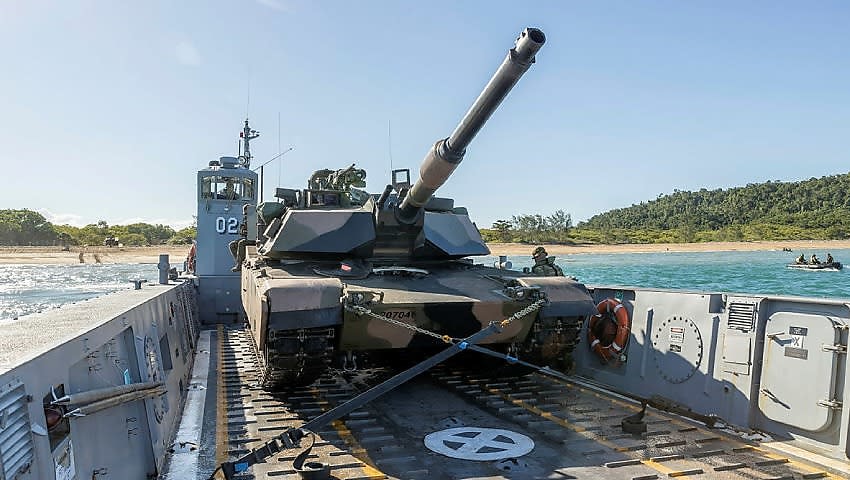Is it time for Defence to adopt a fresh approach to defence capability reviews, given past shortcomings?
To continue reading the rest of this article, please log in.
Create free account to get unlimited news articles and more!
Earlier this month, the Albanese government launched the Defence Strategic Review, touted as the largest assessment of the Australian Defence Force’s structure, force posture and preparedness in 35 years.
According to the Terms of Reference, the review would include considerations of the “priority of investment” in Defence capabilities.
Led by former chief of the defence force, retired Air Chief Marshal Sir Angus Houston, and former Labor defence minister Stephen Smith, the review aims to “identify and prioritise” the estate, infrastructure, disposition, logistics and security investments required to “provide Australia with the Defence force posture required by 2032-33”.
This would involve considering “all elements of the Integrated Investment Program” and issuing recommendations for “the program’s reprioritisation” in response to recently announced “large-scale projects”, including the nuclear-powered submarine procurement program under the AUKUS agreement.
Prime Minister Anthony Albanese had previously said it would involve:
- considerations of whether Tomahawk missiles can be fitted to the Collins Class submarines;
- reviewing progress of the Future Frigates project;
- exploring potential upgrades to weapons on the Arafura Class offshore patrol vessels or through additional Hobart Class air warfare destroyers; and
- advancing Australia’s strike weapons procurement program.
The leads have been tasked with outlining the investments required to support Defence preparedness and mobilisation needs to 2032-33, as well as the associated funding needs.
Recommendations are due to be handed down in March 2023 in time for the National Security Committee of Cabinet.
So, how can Defence best approach this review to produce optimum outcomes in the next seven months?
According to Bob Moyse — a former Royal Australian Navy and Royal Marines officer and former desk officer in the strategic policy division of the Department of Defence — decision-makers must steer clear of past approaches to defence reviews.
“A flawed process is the reason reviews keep leading to a future force that looks just like the old one on steroids,” he writes in ASPI’s The Strategist.
He reflects on the existing process, in which the Defence Department’s “strategic centre” identifies strategic-level problems before the force design division and the Army, Navy, and Air Force independently assess gaps in their capability.
Moyse claims this process, while “logical”, has produced a future force that “looked just like the one it was replacing” but “bigger, heavier and with more bling”.
He continues: “Each service is free to address a strategic problem with whatever operational and tactical-level solutions it sees fit.
“Humans are most comfortable in their comfort zone, so they invariably want to fight the fights they know and love using the doctrine and toolsets they grew up with.
“Almost inevitably, this leads to finding they need the same as before plus some more.”
Rather than repeating this approach, Moyse suggests stakeholders first assess the ADF’s operational defence strategy before exploring options to fill capability gaps.
“If you want 45-tonne infantry fighting vehicles, you design the tactical fight so you need 45-tonne infantry fighting vehicles to win it,” he writes.
However, Moyse acknowledges the three services each favour different fighting strategies, which are “largely incompatible”.
“In Australian single-service experiments, each service can turn a blind eye to the other services’ incompatibility with its own ambitions,” he continues.
“In many cases, that makes the chosen fight untenable, or at least dependent on heroic assumptions.”
To mitigate these risks in the short-term, Moyse recommends providing “direct contestability support” to former defence minister Stephen Smith and former ADF chief Angus Houston.
“In the current process, Defence’s contestability division only gets a voice downstream of the important decisions,” he observes.
“It is structured accordingly, so in order to contest things upstream, where it matters, it would need augmentation.
“Uniformed contestability staff are not in a good position to challenge their own service’s institutional aspirations, so it may be necessary to bring in suitable external or retired working-level subject-matter experts.”
According to Moyse, if the leads take this approach, it is likely major defence capability projects won’t survive the review.
“It will be important for Smith and Houston to pin the department down on how it thinks Australia intends to fight, to listen to the contestation and to adjudicate,” he adds.
“The outcome — a statement of the way we will fight — must have sufficient specificity to be enable prioritisation of competing claims.
“If the review does that, we should expect to see a few sacred cows heading for the abattoir to make space in the herd for vital new beasts. If not, we’ll again get more of the same.”
Get involved with the discussion and let us know your thoughts on Australia’s future role and position in the Indo-Pacific region and what you would like to see from Australia's political leaders in terms of partisan and bipartisan agenda setting in the comments section below, or get in touch with

 Login
Login







